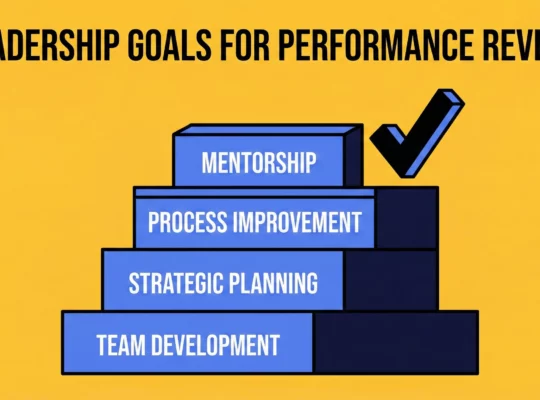The employee engagement survey is a valuable tool used to collect punctual data on the engagement of a company’s members. It is a questionnaire addressed to employees that helps managers make a diagnosis of the quality of life at work.
Done right, this emotional state barometer can be used to improve motivation, employee loyalty, and other crucial elements of corporate culture. Better employee engagement translates into better quality of work and greater productivity.
Because of its importance, this QWL survey must be carried out according to the rules of the art. This is ideal for better participation of the target and relevant data. Here are our tips and tricks to guide you and help you succeed in your employee engagement survey.
Establish the framework for the employee engagement survey
The objectives of an HR engagement survey are multiple and varied. Depending on the company, it can be used to:
- Improve the performance of the company;
- Create an environment conducive to employee motivation;
- Analyze market needs;
- Target a communication campaign;
- Successful decision-making.
It is first necessary to analyze the needs of the company, identify top-priority objectives, and define the themes to be addressed and the HR indicators to be monitored. This is also the ideal time to decide on the target audience, the various stakeholders as well as the team in charge of the approval process.
To carry out this analysis, we can use the information gathered on a trusted platform of employee reviews. This tool can be used to take stock of a company’s successes and dysfunctions through anonymous testimonials from its employees.
Choose the right type of employee engagement survey
Keep in mind that a good employee engagement survey must meet specific criteria. Thus, to be useful and strategic, it must be:
- Systemic and takes into account several factors;
- Regular and monitored over time to obtain real-time data;
- Adapted to a context and issues specific to each environment.
In addition, there are two main categories of employee engagement surveys.
The annual satisfaction survey
On an annual basis, this HR survey is the best known, the longest, and above all the most difficult to analyze. However, it is the ideal choice to address all aspects of quality of life at work. It thus offers a global view of the health of the company and well-being at work, at a given moment.
Since it is only conducted once a year, the annual satisfaction survey limits the responsiveness of managers. The company can then find itself confronted with the consequences of toxic management and even delicate, psychosocial and burnout situations.
The Pulse Survey
Known to be a brief and frequent employee engagement survey, this tool adapts to the organizational functioning of the company. It is an evaluation carried out monthly or quarterly using a short and easy-to-fill questionnaire.
Compared to the annual survey, the Pulse survey offers a short-term view. This employee engagement survey makes it possible to have regular feedback and to intervene quickly. It is also ideal for companies that want to track employee motivation in real-time.
Define the right survey frequency for your business
A spaced evaluation of employee experiences limits the responsiveness of leaders and encourages bad practices in the company. On the other hand, too frequent questioning about their motivation and level of commitment can become boring. A balance must be found.
The right frequency should promote consistent adjustments and strengthen employees’ trust in the importance of employee satisfaction surveys in companies. To find it, the company must take into account certain factors specific to its organization such as:
- The nature of the information to be evaluated;
- The response processing speed;
- The ability to communicate results;
- Ease of responding to respondents’ requests;
- The organizational cadence.
Set a deadline for responses to the employee engagement survey
The purpose of an employee satisfaction survey is to identify the various problems in a company and quickly provide solutions. To achieve this goal, it is important to set processing deadlines and dates early on.
In general, most responses are obtained within seven days of the start of the employee engagement survey. To encourage latecomers to participate, it is recommended to send regular reminders reminding them of the importance of their opinions for the company.
Opt for anonymity and confidentiality of responses
This is one of the prerequisites for obtaining sincere and honest feedback during an employee engagement survey. Indeed, when their identity is protected, the respondent feels reassured. This makes it easier for them to present their point of view on all the subjects under observation.
In addition to questions of identity, those that force the employee to answer usually create hesitation. Instead, it is advisable to add alternative answer options such as the “Don’t know” and “Other” fields.
Use the right publishing mode
After the development and design of a questionnaire, the next step is the publication of the employee engagement survey. The choice of distribution channel depends on the sector of activity and the habits of the target employees.
Publication can be done on the company’s website or social networks, by e-mail, or via a press release. If you use an online survey software, it is important that it is user-friendly. It must therefore propose:
- An intuitive interface;
- Customization options;
- Automated tools;
- Secure hosting conditions;
- Reporting and backup options;
- Contact management features.
Whatever the method, it is important to remind participants that the different responses will be used to improve working conditions. And for good reason, employees contribute to improving the image of the company that values them, listens to them, and empowers them.
Tips for a Successful Satisfaction Survey
Once the need is established, it becomes easier to orient the questions. But here again, you have to know how to choose insightful questions that allow you to have clear answers. The goal is to create a dialogue with the panel and facilitate interventions.
A good satisfaction survey should also start with an introduction. This must mention the confidentiality rules, the objectives of the study, the duration, and mainly the tools used. Internal communication on these elements is also ideal.
The benefits of a well-written quality of life at work survey are reflected in the quality of the information collected and the resulting decisions. To do this, the form must be prepared in accordance with the rules governing its drafting.
Addressing important topics
The employee engagement survey should encompass some important topics that influence employee motivation. Questions should target, among other things:
- Working conditions;
- Relations between colleagues and those with the manager;
- Pride in belonging to the company;
- Personal development;
- Career development;
- Job satisfaction;
- Well-being and work-life balance;
- Employees’ short-term projects;
- Recognition at work.
In addition to these main themes, it is possible to add company- or industry-specific factors that influence employee engagement. For a first experience and in case of doubt, you can draw inspiration from an example of an employee satisfaction survey.
It is also advisable to logically organize your survey in several parts, according to the themes. This helps the employee participating in the employee engagement survey to stay oriented. Headings can then be used to distinguish each group of questions.
Adopt clear and concise questions
This is ideal for employees, regardless of their level, to understand what is required of them. To avoid ambiguities and biases in the answers, it is, therefore, preferable to prioritize simple, clear, and precise questions. Each has only one meaning and relates to one idea.
As much as possible, overly long forms should be avoided. If there are several pages, we limit ourselves to 10 questions for each and we think about adding a progress bar. In all cases, the respondent must spend less than 20 minutes answering your survey.
Customize your questionnaire with an attractive design
User experience has an important role in the collection of information in companies. Indeed, a survey with a design adapted to the brand’s graphic charter is a sign of professionalism.
It is therefore necessary to work on the fonts, the colors, the pagination of the form, or even add animations. All these elements contribute to the attractiveness of an employee engagement survey and increase the participation rate.
Tips for managing the employee engagement survey
Once the employee engagement survey is completed, the last and most delicate step is debriefing. In addition to quantitative analysis, the data collected will also be used to measure employees’ feelings and provide qualitative solutions. But that’s not all.
Rely on a compact and simple results analysis model
This phase includes analyzing the responses and indicators thoughtfully and then breaking down the results. It is also used to translate information on each item into statistical data. For this purpose, there is software specifically designed to simplify the process.
Based on the different responses, it is also necessary to identify strengths and areas for improvement. This is the importance of responding to employees’ opinions. This practice helps maintain dialogue with employees, reassure them, and show interest in their opinions.
Opt for transparent communication
Once all QWL diagnoses have been made, it’s time to inform employees. To be understood by all parties, rely on a visual story created from the data obtained. Here again, it will be necessary to choose the dissemination medium that adapts to the need.
A transparent system, participative management, and the creation of employee personas are among other tips to avoid a bad atmosphere at work. These techniques build trust and encourage employees to get involved in their personal development at work.
Implement QWL actions
The final step in the employee engagement survey is to put in place action plans and concrete measures. Indeed, it is about developing new organizational objectives and meeting the specific needs of employees.
The purpose is to solve or improve the problems identified. The choice of priorities will be made in a workshop, during a collective work that brings together all parties. Demonstrating the company’s commitment to its employees is part of a strategy designed to properly manage your company’s e-reputation.
Thus, in a company, employee motivation can very quickly become its Achilles heel. It is then necessary to install a QWL barometer to make the right decisions at the right time. Of course, beyond its development, the employee engagement survey will have to be associated with a concrete improvement program that involves everyone.





